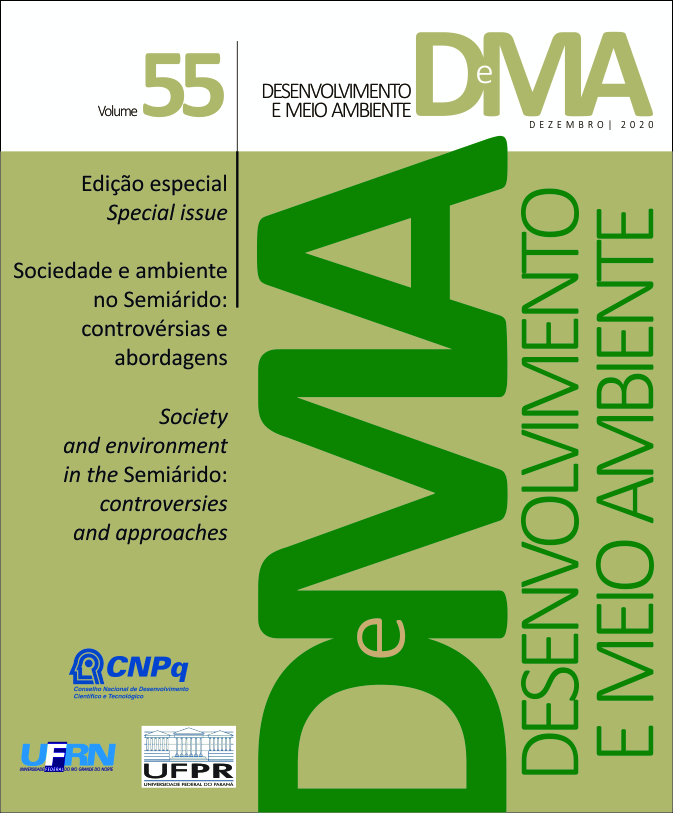Representations of droughts emigrants from the northeastern semiarid
DOI:
https://doi.org/10.5380/dma.v55i0.73031Keywords:
Climate change, climate refugees, “retirantes”, drought, semiaridAbstract
Climatic changes and their projections of worsening in the Brazilian Northeast increase concerns about the impact in the environment, economy and the lives of communities. Among the most studied social impacts are the temporary or permanent migrations that integrate what is called climatic refugees. The semiarid Northeast is a vast region in the Brazilian territory that suffers with severe conditions caused by the dry climate, with long periods of drought that obligates people to refugee in the largest cities of the seaside to survive. This Brazilian northeasterner, or drought victim, is the most fragile in the social hierarchy and who is most quickly affected by the regular lack of rains in the region. This article analyzes the social representations of northeasterner emigrants based on scientific literature, media and literature, aiming to understand this phenomenon and to contribute to the resilience of communities in a context of worsening of this extreme climatic phenomenon. As a result, it finds various northeasterner emigrant representations, prejudice, drought impacts, social and political drama, relationships of domination, people memory and their needs of organizing public policies.
Downloads
Published
How to Cite
Issue
Section
License
Copyright on works published in this journal rests with the author, with first publication rights for the journal. The content of published works is the sole responsibility of the authors. DMA is an open access journal and has adopted the Creative Commons Attribution 4.0 Not Adapted (CC-BY) license since January 2023. Therefore, when published by this journal, articles are free to share (copy and redistribute the material in any medium or format for any purpose, even commercial) and adapt (remix, transform, and create from the material for any purpose, even commercial). You must give appropriate credit, provide a link to the license and indicate if changes have been made.
The contents published by DMA from v. 53, 2020 to v. 60, 2022 are protected by the Creative Commons Attribution-NonCommercial-NoDerivatives 4.0 International license.
DMA has been an open access journal since its creation, however, from v.1 of 2000 to v. 52 of 2019, the journal did not adopt a Creative Commons license and therefore the type of license is not indicated on the first page of the articles.






